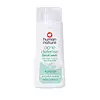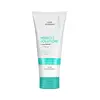What's inside
What's inside
 Key Ingredients
Key Ingredients

 Benefits
Benefits

 Concerns
Concerns

 Ingredients Side-by-side
Ingredients Side-by-side

Water
Skin ConditioningNiacinamide
SmoothingGlycerin
HumectantSodium Cocoyl Isethionate
CleansingDecyl Glucoside
CleansingCoco-Glucoside
CleansingCentella Asiatica Extract
CleansingMelaleuca Alternifolia Leaf Oil
AntioxidantXanthan Gum
EmulsifyingParfum
MaskingGluconolactone
Skin ConditioningSodium Citrate
BufferingCoconut Acid
CleansingSodium Isethionate
CleansingCalcium Gluconate
HumectantPotassium Sorbate
PreservativeSodium Benzoate
MaskingWater
Skin ConditioningCocamidopropyl Betaine
CleansingDisodium Cocoamphodiacetate
CleansingCocamide DEA
EmulsifyingSodium Chloride
MaskingAcrylates Copolymer
Potassium Cocoyl Glycinate
Potassium Cocoate
EmulsifyingButylene Glycol
HumectantTriethanolamine
BufferingMelaleuca Alternifolia Leaf Oil
AntioxidantCaprylyl Glycol
EmollientHexylene Glycol
EmulsifyingDisodium EDTA
Niacinamide
SmoothingSalicylic Acid
MaskingLactic Acid
BufferingGlycolic Acid
BufferingMelaleuca Alternifolia Leaf Extract
PerfumingGluconic Acid
Mandelic Acid
AntimicrobialSodium Hydroxide
BufferingLactobionic Acid
BufferingSodium Hyaluronate Crosspolymer
HumectantAnthemis Nobilis Flower Extract
MaskingCalendula Officinalis Flower Extract
MaskingMentha Piperita Leaf Extract
Skin ConditioningThymus Vulgaris Extract
PerfumingChrysanthemum Parthenium Extract
Skin ConditioningLippia Citriodora Leaf Extract
AstringentBellis Perennis Flower Extract
Skin ConditioningOriganum Vulgare Leaf Extract
Skin ConditioningSalvia Officinalis Leaf Extract
CleansingUrtica Dioica Extract
AstringentEthylhexylglycerin
Skin ConditioningPentylene Glycol
Skin ConditioningHydroxyacetophenone
AntioxidantTocopherol
AntioxidantPotassium Chloride
Water, Cocamidopropyl Betaine, Disodium Cocoamphodiacetate, Cocamide DEA, Sodium Chloride, Acrylates Copolymer, Potassium Cocoyl Glycinate, Potassium Cocoate, Butylene Glycol, Triethanolamine, Melaleuca Alternifolia Leaf Oil, Caprylyl Glycol, Hexylene Glycol, Disodium EDTA, Niacinamide, Salicylic Acid, Lactic Acid, Glycolic Acid, Melaleuca Alternifolia Leaf Extract, Gluconic Acid, Mandelic Acid, Sodium Hydroxide, Lactobionic Acid, Sodium Hyaluronate Crosspolymer, Anthemis Nobilis Flower Extract, Calendula Officinalis Flower Extract, Mentha Piperita Leaf Extract, Thymus Vulgaris Extract, Chrysanthemum Parthenium Extract, Lippia Citriodora Leaf Extract, Bellis Perennis Flower Extract, Origanum Vulgare Leaf Extract, Salvia Officinalis Leaf Extract, Urtica Dioica Extract, Ethylhexylglycerin, Pentylene Glycol, Hydroxyacetophenone, Tocopherol, Potassium Chloride
 Reviews
Reviews

Ingredients Explained
These ingredients are found in both products.
Ingredients higher up in an ingredient list are typically present in a larger amount.
This tea tree oil comes from the leaves of the Tea Tree plant. Tea tree oil has antioxidant, anti-inflammatory, and antimicrobial properties.
According to the book Journal of Profiles of Drug Substances, tea tree helps in reducing acne-causing bacteria such as Propionibacterium acnes. This is due to the Terpinen components of tea tree oil.
Tea tree may cause sensitivity and irritation for some people. This oil naturally contains fragrance such as linalool and limonene.
However, research shows irritation usually occurs when using pure tea tree oil and not in cosmetic products.
Tea tree oil was found to help relieve the symptoms of psoriasis in one study.
Tea tree oil is toxic when ingested. Another study showed it to caused damage to the nervous system of dogs and cats when applied to their skin or given orally.
Learn more about Melaleuca Alternifolia Leaf OilNiacinamide is a multitasking form of vitamin B3 that strengthens the skin barrier, reduces pores and dark spots, regulates oil, and improves signs of aging.
And the best part? It's gentle and well-tolerated by most skin types, including sensitive and reactive skin.
You might have heard of "niacin flush", or the reddening of skin that causes itchiness. Niacinamide has not been found to cause this.
In very rare cases, some individuals may not be able to tolerate niacinamide at all or experience an allergic reaction to it.
If you are experiencing flaking, irritation, and dryness with this ingredient, be sure to double check all your products as this ingredient can be found in all categories of skincare.
When incorporating niacinamide into your routine, look out for concentration amounts. Typically, 5% niacinamide provides benefits such as fading dark spots. However, if you have sensitive skin, it is better to begin with a smaller concentration.
When you apply niacinamide to your skin, your body converts it into nicotinamide adenine dinucleotide (NAD). NAD is an essential coenzyme that is already found in your cells as "fuel" and powers countless biological processes.
In your skin, NAD helps repair cell damage, produce new healthy cells, support collagen production, strengthen the skin barrier, and fight environmental stressors (like UV and pollution).
Our natural NAD levels start to decline with age, leading to slower skin repair, visible aging, and a weaker skin barrier. By providing your skin niacinamide, you're recharging your skin's NAD levels. This leads to stronger, healthier, and younger looking skin.
Another name for vitamin B3 is nicotinamide. This vitamin is water-soluble and our bodies don't store it. We obtain Vitamin B3 from either food or skincare. Meat, fish, wheat, yeast, and leafy greens contain vitamin B3.
The type of niacinamide used in skincare is synthetically created.
Learn more about NiacinamideWater. It's the most common cosmetic ingredient of all. You'll usually see it at the top of ingredient lists, meaning that it makes up the largest part of the product.
So why is it so popular? Water most often acts as a solvent - this means that it helps dissolve other ingredients into the formulation.
You'll also recognize water as that liquid we all need to stay alive. If you see this, drink a glass of water. Stay hydrated!
Learn more about Water